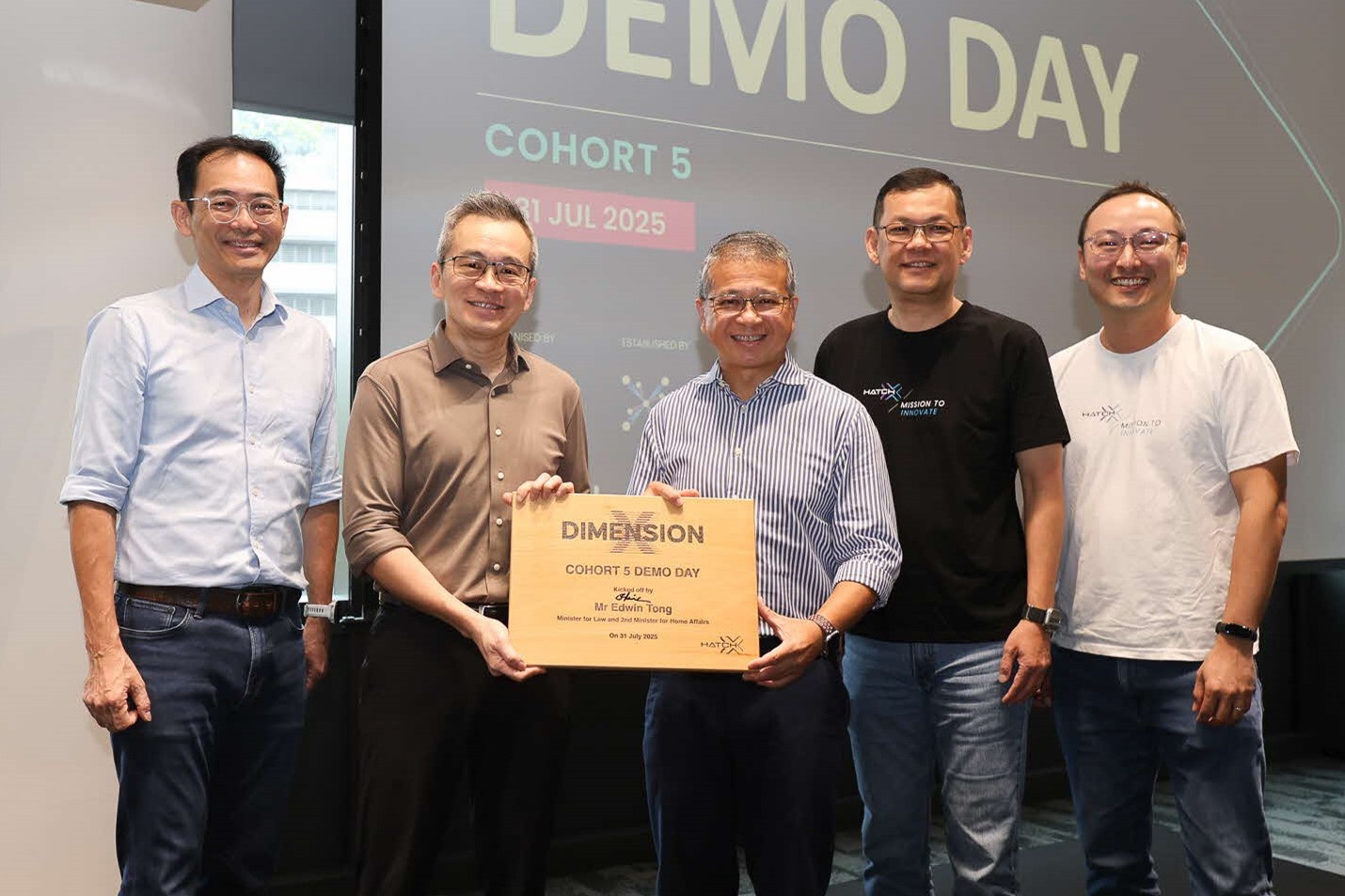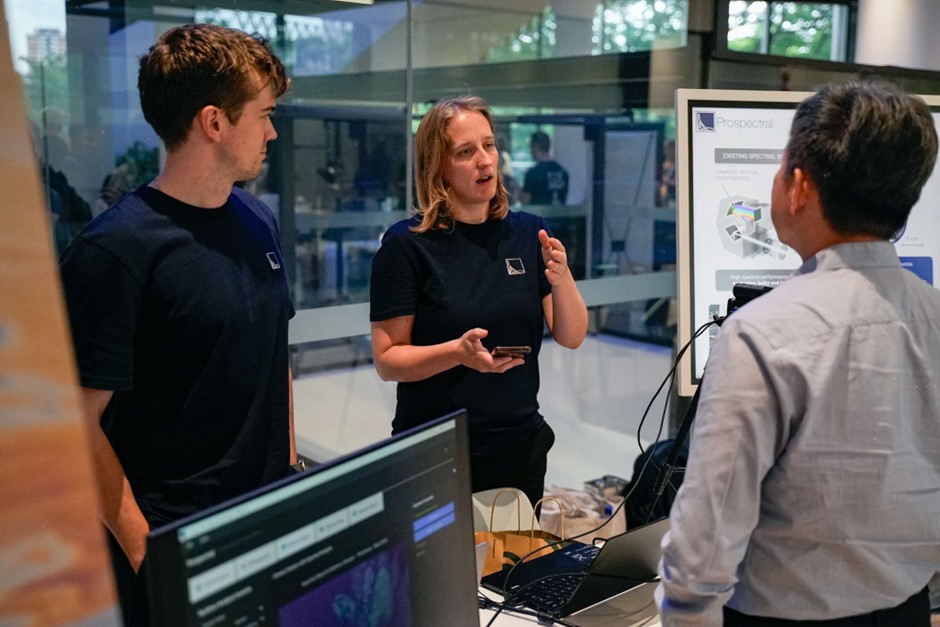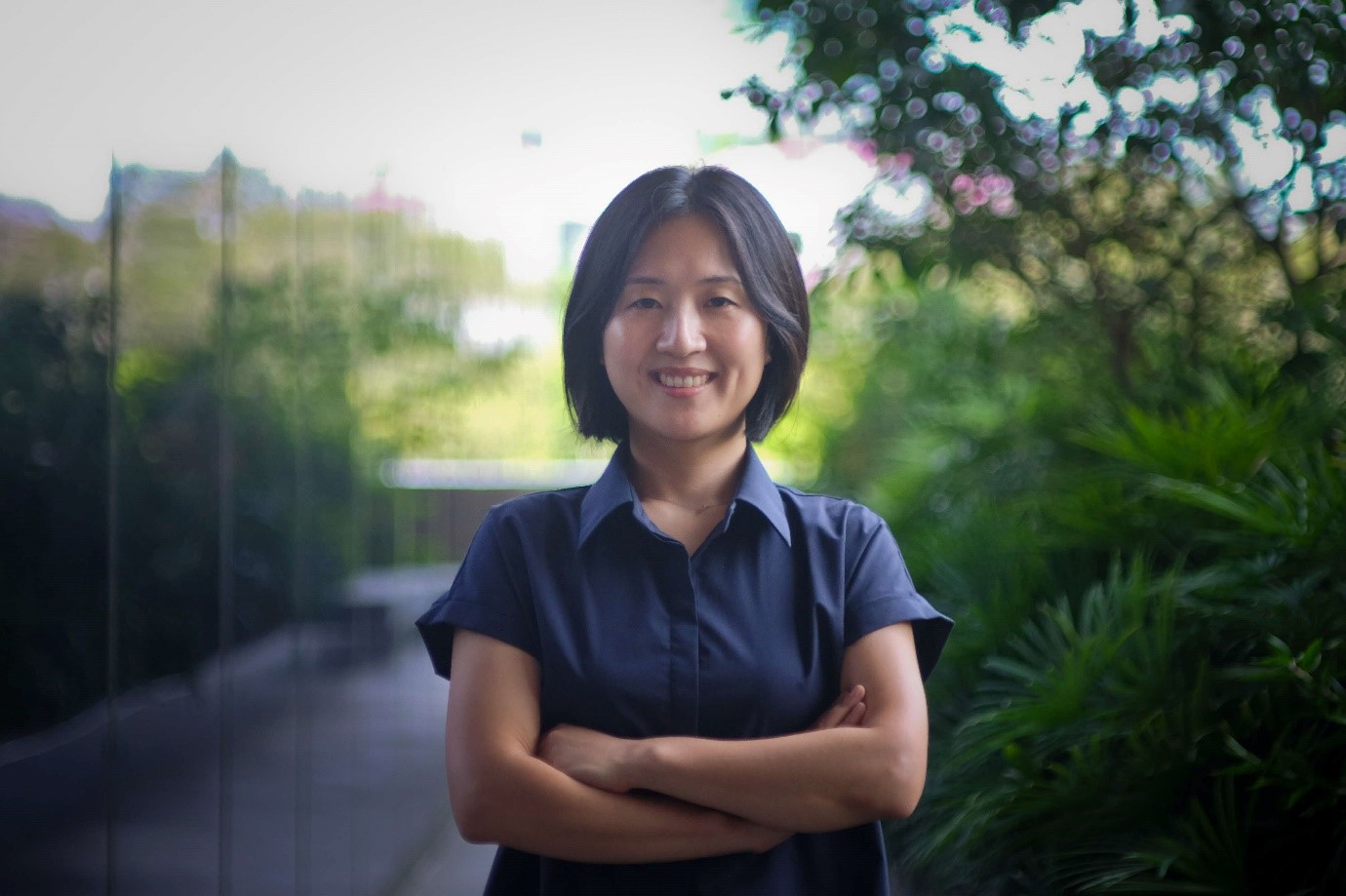 (Photo: HTX)
(Photo: HTX)
While artificial intelligence (AI) is essential for enabling robots to navigate unknown terrain and reason on the fly, AI models are often too large and power-hungry for a robot’s battery-constrained onboard system, and this can ultimately hobble performance.
Dinesh Narayanan and his team at US-based General Robotics believe they’ve cracked this problem with their software platform GRID (General Robot Intelligence Development), which allows the offloading of compute-heavy AI tasks to the cloud, sidestepping hardware limitations.
GRID also streamlines the traditionally complex and time-consuming process of robot development by converting plain English instructions into usable code, which can then be automatically tailored to each robot’s unique hardware. This eliminates the need for developers to build everything from scratch.
 General Robotics co-founders Ashish Kapoor (left) and Dinesh Narayanan (centre) meet Minister for Law and Second Minister for Home Affairs Mr Edwin Tong at Dimension X Demo Day. (Photo: HTX/Law Yong Wei)
General Robotics co-founders Ashish Kapoor (left) and Dinesh Narayanan (centre) meet Minister for Law and Second Minister for Home Affairs Mr Edwin Tong at Dimension X Demo Day. (Photo: HTX/Law Yong Wei)
“We aim to be the fastest way to develop and deploy AI on any type of robot, and it’s rooted in our vision of making a real impact through robotics’ myriad applications,” shared Dinesh.
The overarching goal of General Robotics, he added, is to democratise robotics development, empowering governments and enterprises to build their own AI-powered solutions rapidly. This vision took a significant step forward through Dimension X – the flagship open innovation programme by Hatch, HTX’s innovation centre, that addresses challenges faced by Singapore’s Home Team.
As part of the fifth cohort, Dinesh and his team had the opportunity to work closely with HTX’s Robotics, Automation & Unmanned Systems (RAUS) Centre of Expertise (CoE) from March to July 2025, putting GRID to the test in a real-world environment.
 (From left to right) HTX Assistant Chief Executive (Programmes) Colin Tan, HTX Chief Executive Chan Tsan, Minister for Law and Second Minister for Home Affairs Edwin Tong, HTX Director of Partnerships Eric Chua, and Hatch Centre Director Mok Shao Hong. (Photo: HTX/Law Yong Wei)
(From left to right) HTX Assistant Chief Executive (Programmes) Colin Tan, HTX Chief Executive Chan Tsan, Minister for Law and Second Minister for Home Affairs Edwin Tong, HTX Director of Partnerships Eric Chua, and Hatch Centre Director Mok Shao Hong. (Photo: HTX/Law Yong Wei)
The collaboration culminated in Demo Week, where 11 selected start-ups chosen from a global pool of more than 270 applicants conducted live trials and showcased their proofs-of-concept (POCs) to people like Home Team stakeholders and members of the broader tech ecosystem.
The programme concluded with Demo Day, where participants pitched their solutions, each receiving S$100,000 in prize money to further develop technologies that can shape the future of public safety.
During the event, the guest-of-honour, Minister for Law and Second Minister for Home Affairs Mr Edwin Tong, spoke about the importance of innovation and partnerships.
“In today’s public safety landscape, keeping still means you will fall behind. We must constantly think of innovating, how to use technology, how to use AI and how to apply it in everyday situations to allow us to level up,” said Mr Tong. “So, that partnership you’re building and the ideas you might have dreamt up in a non-public safety context can be deployed in a public safety context.”
Solving real-world challenges
 UK start-up and Cambridge spinout Prospectral demonstrating their solution at Demo Day. (Photo: HTX/Law Yong Wei)
UK start-up and Cambridge spinout Prospectral demonstrating their solution at Demo Day. (Photo: HTX/Law Yong Wei)
General Robotics wasn’t alone in uncovering new tech-for-good applications through Dimension X. UK-based Prospectral, which develops ultra-compact cameras using flat optics for advanced spectral imaging, discovered how their technology can enhance frontline operations in challenging environments.
Spectral imaging helps identify materials by how they reflect light across different wavelengths.
During the programme, the team developed a POC that fused its spectral camera with LiDAR (Light Detection and Ranging) to remotely detect and pinpoint oil spills by harnessing temporal data. Citing recent spills off Singapore’s shores that triggered costly and complex cleanup operations, Prospectral CEO Dr Gwen Wyatt-Moon explained that their system enables responders to quickly identify contamination zones and deploy cleanup resources more effectively.
Collaborating with HTX’s Forensics CoE not only accelerated their hardware and software development through targeted feedback but also sharpened their focus on real-world safety challenges, she noted. The move to integrate the LiDAR, for example, was proposed by the Forensics CoE.
“They’ve been very good at pointing out, ‘Okay, this technology is cool, but why is it important?’ That helped us to zero in on end-user pain points,” said Dr Gwen.
Looking ahead, she sees extended applications in crowd monitoring, crime scene investigations – such as detecting narcotics – as well as search and rescue missions.
An expanded playing field
 Deeply’s head of business development Ki-Sun Kim said that participating in Dimension X allowed the South Korean start-up to stretch its core technologies. (Photo: HTX/Alywin Chew)
Deeply’s head of business development Ki-Sun Kim said that participating in Dimension X allowed the South Korean start-up to stretch its core technologies. (Photo: HTX/Alywin Chew)
Being a part of Dimension X has also given start-ups a possible foothold in a foreign market. South Korean firm Deeply, for example, adapted their indoor-focused intelligent sound recognition system to address public safety needs in Singapore, thus broadening its market reach.
The technology involved in this project detects critical audio cues such as screams, crying and aggressive speech in real time to complement traditional CCTV surveillance.
According to Deeply’s head of business development Kim Ki-Sun, the collaboration with HTX’s Intel Programme Management Centre (IPMC) pushed them to develop portable, battery-powered audio sensors and refine their AI models to better integrate with existing national systems. This has in turn unlocked new use cases like early emergency detection in parks, trails, and public restrooms, where seniors are prone to accidents.
“They wanted to stretch our core technologies, and it was very meaningful to adjust them for practical use in Singapore,” said Ki-Sun.

